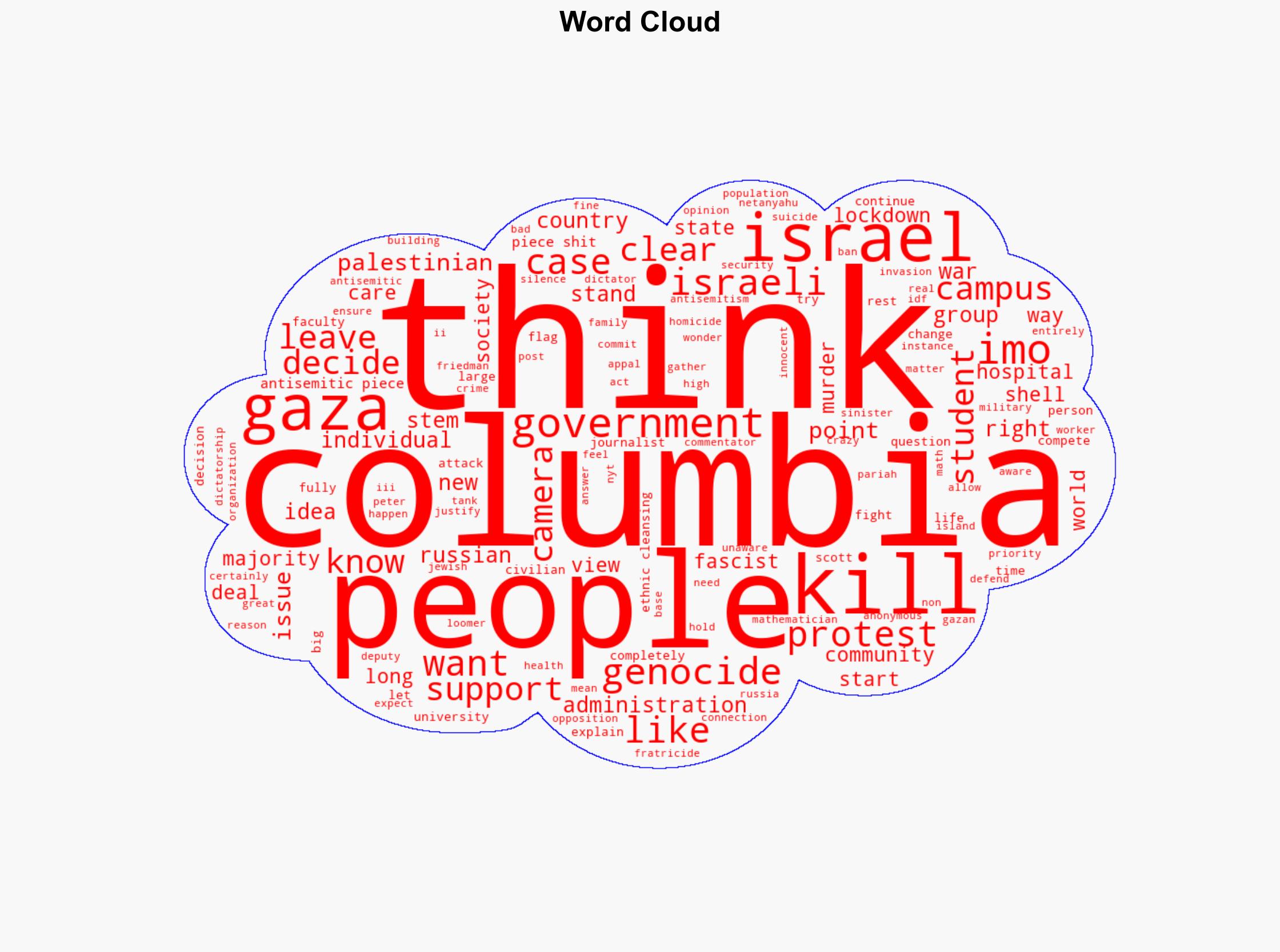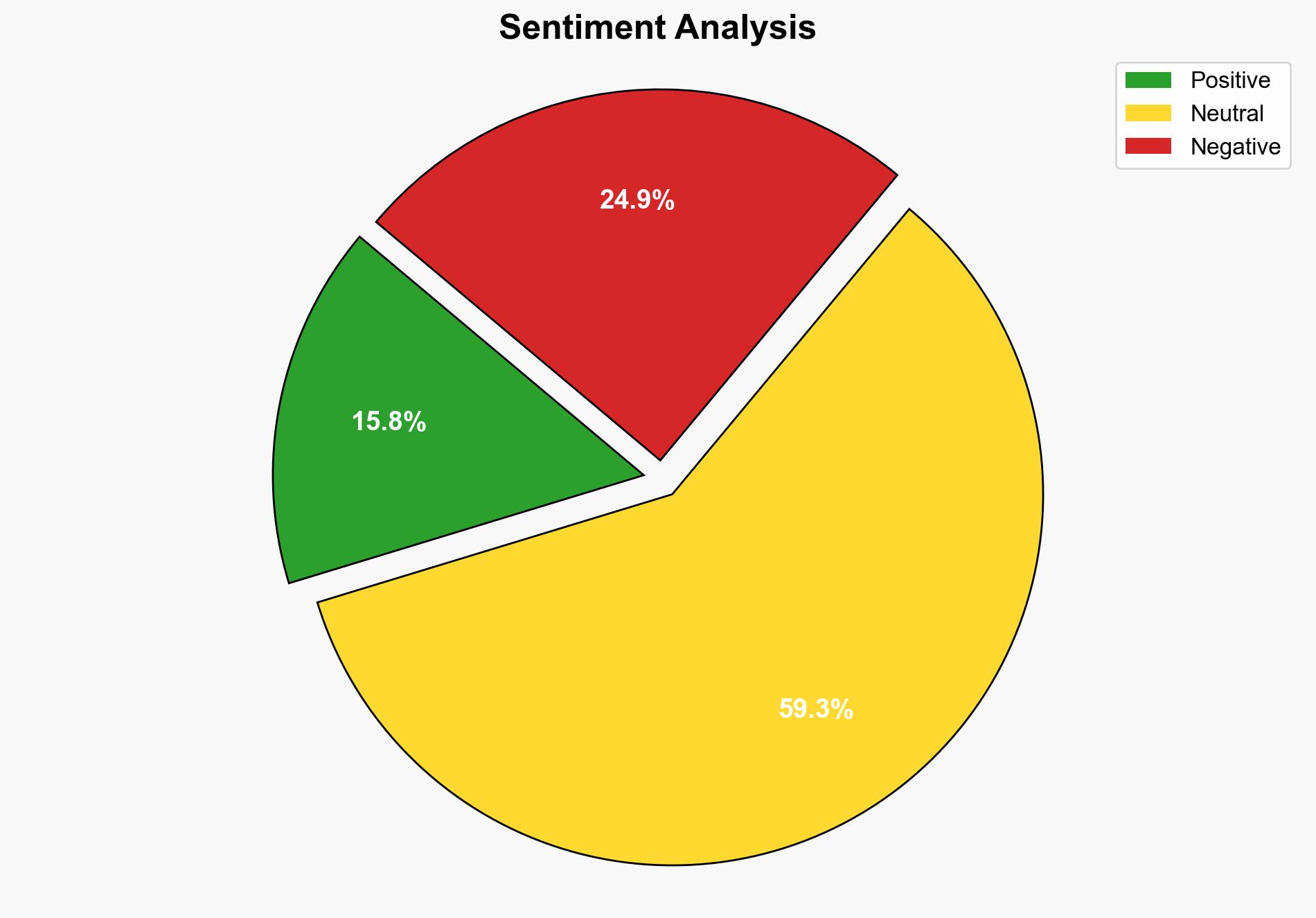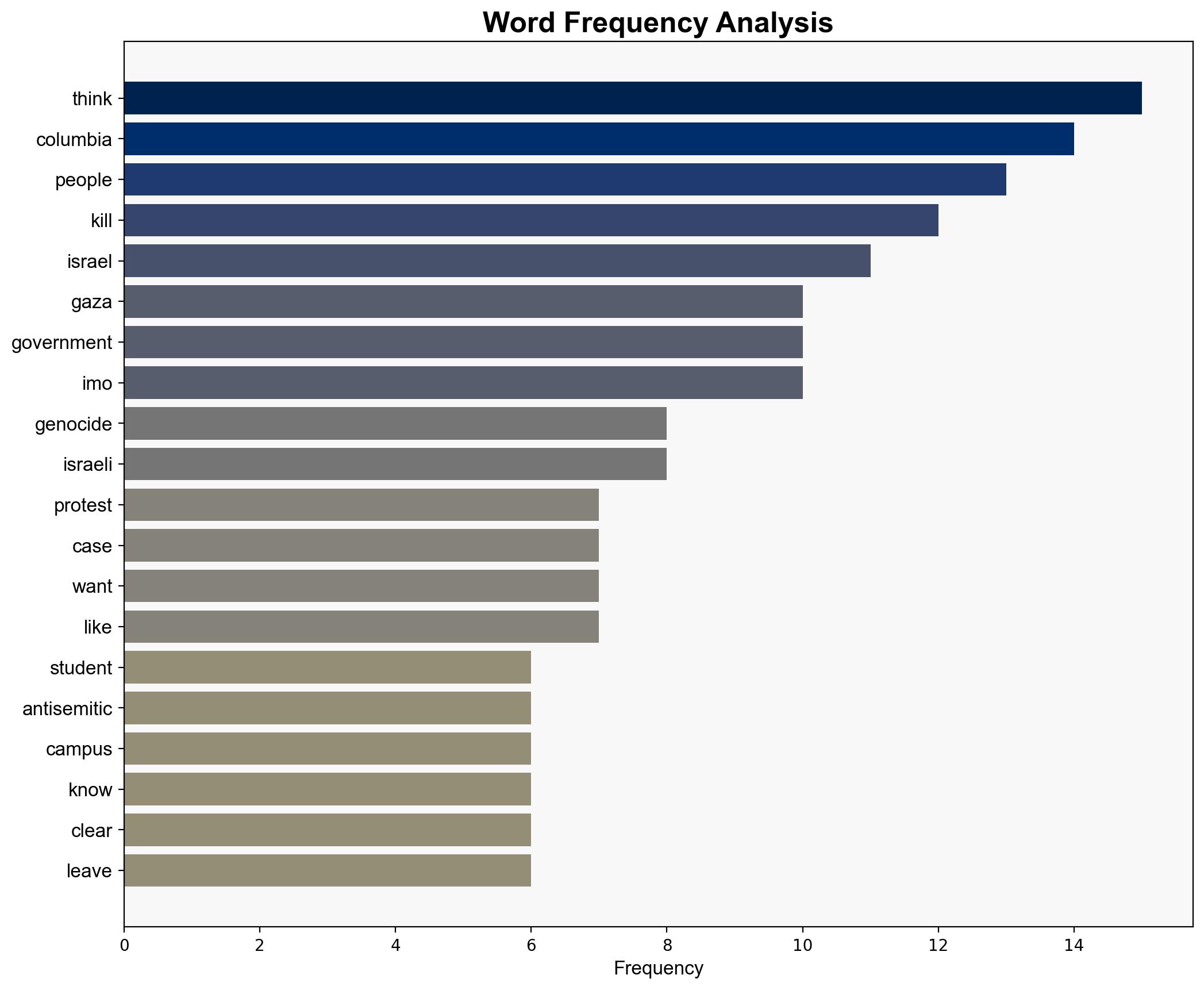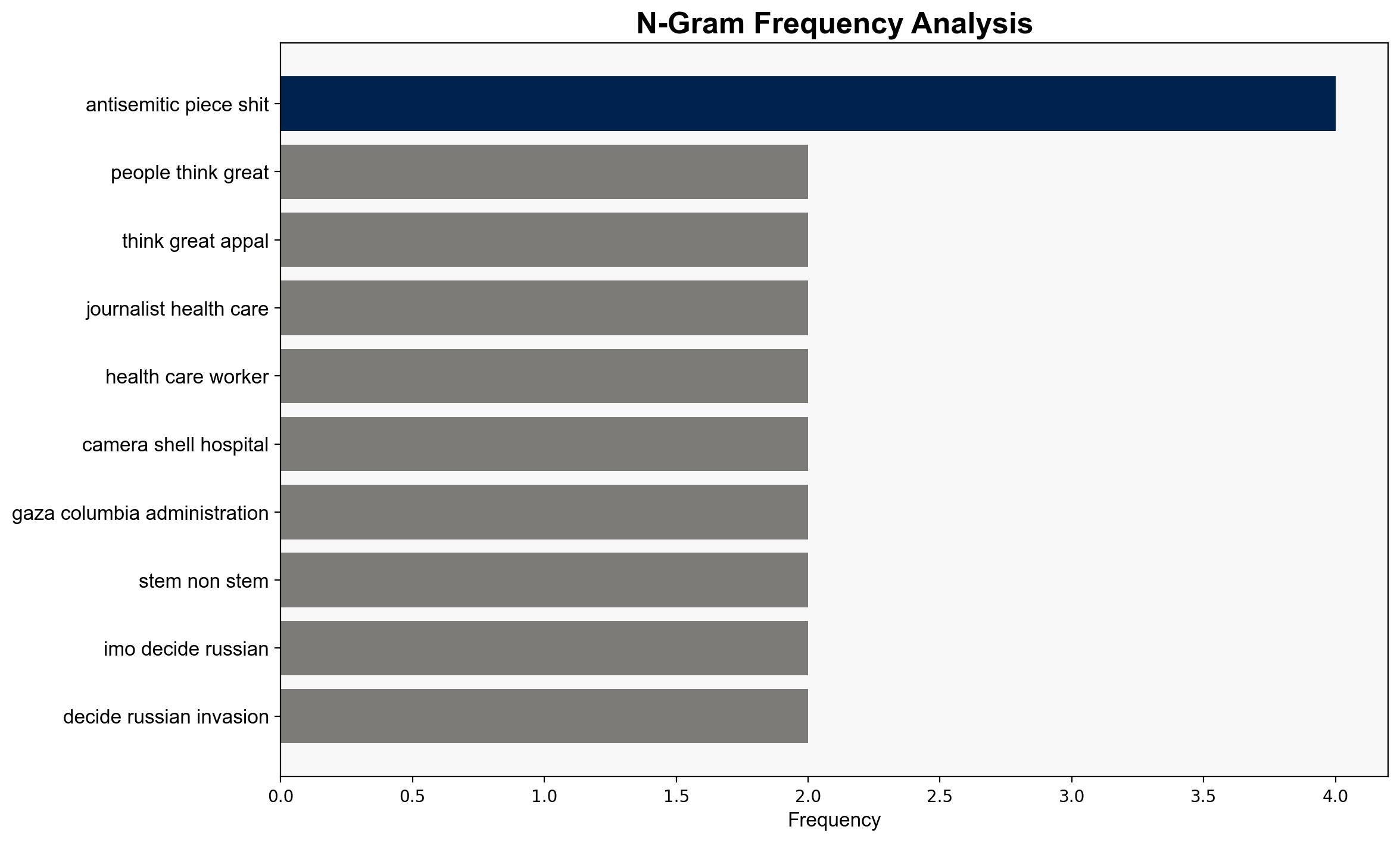The Situation at Columbia XXXII – Columbia.edu
Published on: 2025-08-25
Intelligence Report: The Situation at Columbia XXXII – Columbia.edu
1. BLUF (Bottom Line Up Front)
The most supported hypothesis suggests that the heightened tensions at Columbia University are primarily driven by external geopolitical events, specifically the conflict in Gaza, which is influencing campus dynamics and security measures. Confidence level: Moderate. Recommended action: Columbia University should enhance dialogue and educational initiatives to address misinformation and foster understanding among students.
2. Competing Hypotheses
Hypothesis 1: The unrest at Columbia University is a direct result of the administration’s perceived alignment with Israeli policies, leading to increased protests and security concerns on campus. This hypothesis is supported by references to administrative decisions and student reactions to geopolitical events.
Hypothesis 2: The situation is primarily a manifestation of broader societal polarization and misinformation, with the campus serving as a microcosm of larger ideological battles. This hypothesis considers the influence of external commentators and media narratives shaping student perceptions and actions.
3. Key Assumptions and Red Flags
– Assumption 1: The administration’s actions are perceived as supportive of Israeli policies, which may not reflect the full spectrum of their intentions.
– Assumption 2: External media narratives are significantly influencing student perceptions without critical examination of sources.
– Red Flag: The potential for cognitive bias in interpreting events as solely antisemitic or anti-Israel without considering broader geopolitical contexts.
– Missing Data: Lack of direct statements from Columbia University administration regarding their stance on the conflict.
4. Implications and Strategic Risks
– The continuation of protests could escalate into more significant campus disruptions, affecting academic activities and campus safety.
– The situation may attract external political and media attention, further polarizing student and faculty opinions.
– Potential reputational damage to Columbia University if perceived as unable to manage internal dissent effectively.
5. Recommendations and Outlook
- Enhance communication strategies to clarify the university’s stance and actions regarding the conflict in Gaza.
- Facilitate open forums and workshops to promote dialogue and understanding among students with differing viewpoints.
- Scenario-based Projections:
- Best Case: Increased dialogue leads to reduced tensions and a more informed student body.
- Worst Case: Escalation of protests results in significant disruptions and negative media coverage.
- Most Likely: Continued low-level unrest with sporadic protests and media attention.
6. Key Individuals and Entities
– Marjorie Taylor Greene
– Laura Loomer
– Thomas Friedman
– Victor Mendelson
– Shoshana Shendelman
7. Thematic Tags
national security threats, geopolitical tensions, campus security, media influence





